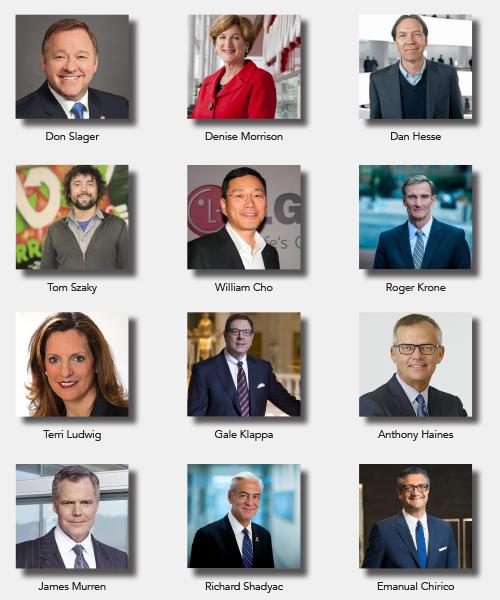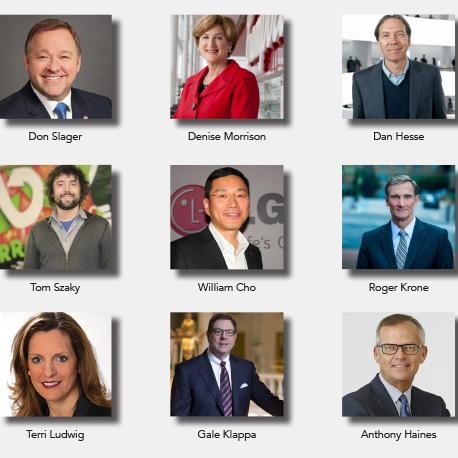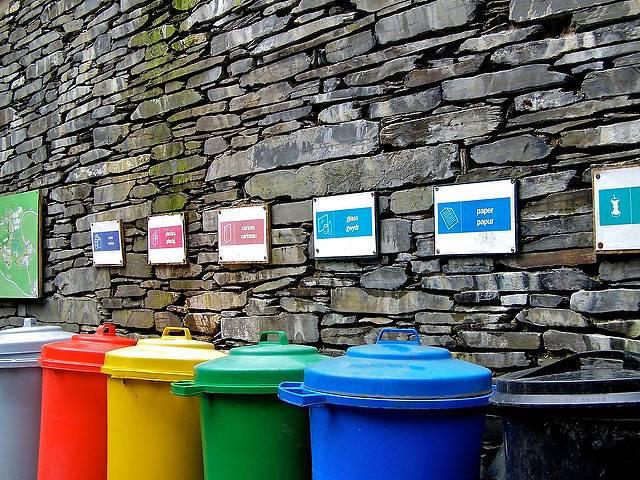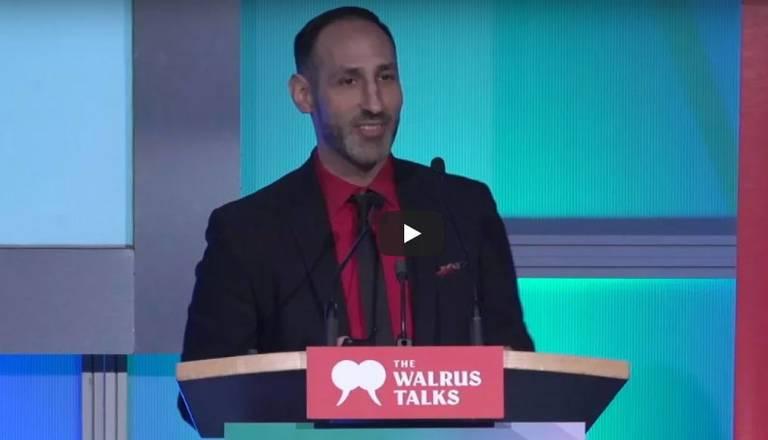Business as a Tool for Compassion: LifeStraw Brings Safe Water to One Million Children in Kenya


Psychic numbing in a complex world
Typically, an article like this will start out with some ghastly statistic. Yet another story meant to jolt us into awareness of a grave injustice; crushing poverty, violence and oppression, or news of our disintegrating environment.
We want to care, but the brief shock of awareness subsumes into the next plea for our attention. Then the next, and the one after that.
We want to do something, especially for the causes close to our heart. But, in a world divided by fantastic wealth and unrelenting poverty, we’re stuck in the middle, with few resources to actually move the needle toward progress.
Or so we think.
On that premise, let's dig into the numbers.
A goal to end poverty
In September of 2015, nations of the world adopted the Sustainable Development Goals, a set of 17 goals succeeding the Millennium Development Goals agreed to by the United Nations in 2000. On both lists of development goals, ending poverty was and still is the top priority.
That an end to poverty remains a primary goal after 15 years may imply that little progress has been made. In fact, the rate of extreme poverty, defined by the World Bank as living on less than $1.90 per day, continues a sharp downward trend.
Poverty Rate Decline. Data: World Bank, Wolfram Alpha
According to the World Poverty Clock, more than 73,000 people have escaped poverty - today. The flip side of that coin is that more than 15,000 people have, today, have fallen into poverty. The sum total of people living in extreme poverty as of March 23, 2018, is about 619,800 people. By the time you read this, many more people will make the escape.
Nonetheless, the World Bank estimates approximately three-quarters of a billion people face unrelenting poverty every day of their lives.
What factors enable those that do break free?
Education: making the escape
Across all social, economic, and political stratum, education is the common denominator for a good, self-fulfilling life.
Too many of us in the developed world equate a “good” life to consumption and material wealth. For the estimated 800 million people haunted by the prospect of lifelong poverty, a good life may simply mean relief from the daily struggle to survive; the opportunity to realize one’s potential and possibly give a helping hand to those left behind.
But poverty itself remains an enormous hurdle to education. In many developing countries this is exacerbated by limited access to resources, deficient governance, and poor health.
Just as the poverty rate has declined over the last three decades, so too the rate of global childhood mortality. According to Unicef data, the number of children dying before their fifth birthday has dropped from 93 per 1,000 live births in 1990 to 41 in 2016.
That’s the good news.
Nonetheless, in 2014, nearly one-half-million children never celebrated their fifth birthday.
That’s the bad news. Especially since it is largely preventable.
The nexus of health, education, and prosperity
According to 2017 World Health Organization statistics, Diarrhea is a primary killer of children under five years old, running a close second behind Pneumonia. Together, pneumonia and diarrhea kill 1.4 million children every year – more than all other childhood illnesses combined. However, the risk of death from these diseases isn't spread evenly across the globe. According to the World Health Organization, children in sub-Saharan Africa are more than 15 times more likely to die before the age of 5 than children in high-income countries.
Globally, in 2000, 1.2 million children died due to diarrhea. By 2015 that number dropped to 526,000, a 57 percent reduction. The declining rate of childhood mortality in Sub-Saharan Africa isn't keeping pace with the global trend, dropping from 569,000 in 2000 to 295,000 in 2015 - only a 47 percent reduction. In Kenya, an estimated 5,442 children under five die every year from diarrheal disease and 10,507 from acute respiratory infection.
It's difficult to learn, let alone even make it to class when you're constantly battling a life-threatening disease. Globally, some 2.5 million children miss school due to illness. The impact of this absenteeism comes down especially hard for girls, as they are expected to be caregivers for their ailing siblings.
A Princeton study by Tom S Vogl entitled Education and Health in Developing Economies examines the complex relationship between health, education, and prosperity.
“In the course of development, few processes are as intertwined with economic growth as human capital accumulation,” writes Vogl.
“Schooling makes workers more productive, speeds the development of new technologies, and better equips parents to raise skilled children, all of which promote economic growth.”
Safe water
Some people pray for victory Some people pray for peace Some people pray for extra time Some pray for sweet release Some pray for health and happiness For riches and renown But none of this will matter much If the waters don't come down- Don Henley, "Praying for Rain"
No human endeavor succeeds if "the waters don't come down." It's as plain a fact as the sun rising every morning and setting every night. For most in the developed world, access to clean drinking water is a "given," taken for granted. Many of us eschew mere tap water in favor of water in a plastic bottle, which is often less sanitary and costs on average 2000 times more than tap water.
Then there's everyone else.
According to a joint report by the World Health Organization and Unicef, 844 million people lack basic drinking water service; 263 million (mostly women) spend more than 30 minutes for each trip collecting water outside the home; 159 million simply drink untreated water from lakes or rivers. Water and sanitation-related diseases remain among the major causes of death in children under five; more than 800 children die every day from diarrhoeal diseases linked to poor hygiene. (UN: "Clean Water, Why it Matters")
More people own cell phones than have regular access to a toilet.
Wresting poor countries from systemic poverty and inadequate social foundations require a well-educated population. On top of all the barriers children face in getting an education, arguably the biggest challenge is access to clean drinking water.
Are we numb yet?
Now that we’ve ingested some fundamental numbers, we're probably feeling that tinge of psychic numbing we spoke of at the start of this article. Not to say that we don’t care, exactly, but it's difficult to grasp the magnitude of the problem. Besides, what can we do about it, half a world away?
As specious as it sounds, you already have.You've stayed with me this far and It's unlikely this is your first time to the rodeo. Taking onboard statistical examinations of the plethora of human misfortunes and suffering, in all its many manifestations, is a daily practice. I'd imagine you started reading this already a little numb.
Now, finally, let's get to solutions.
LifeStraw: Follow the Liters
As Vogle writes in the research paper referred to earlier:
"...health enables children to travel to school, concentrate, and think clearly, all of which may improve educational outcomes."
Earlier this year, a small army of volunteers and a local, on-the-ground workforce spread out through rural Kenya in one final push to meet its objective: ensuring that one million school children have access to safe drinking water, a goal set only four years prior.
In schools spread across the Kenyan countryside, workers installed LifeStraw Community water filters at nearly 1700 schools through LifeStraw's Follow the Liters retail program. That's more than 10,600 installations, so far.
But you've heard this before, right? Or something like it. Buy one and we'll donate one to someone in need (likely just a random shipment of stuff) or we donate 5 percent of every purchase to charity (who knows? follow the money. good luck).
You are right to be skeptical. You should be. But this isn't that, and here's a quick rundown why:
- It's not a one-for-one program: Retail products support humanitarian outreach and impact, not just products. This isn't a "shop and drop" one-off program.
- Longterm community involvement: LifeStraw maintains a local presence of 35 people on the ground, assessing needs, monitoring usage, and population health, educating teachers and children about why hygiene and clean water are so important. Staff members visit each school about six times a year for at least five years.
- Transparency: Ongoing and open data. Daily data on each installation is collected by 60 cell phones. Using mobile survey platforms collect data on product performance, usage and education rates as well as monitor repairs, maintain inventory data, and capture personal stories. Like the name says, follow the liters.
When a retail product is purchased, one child in a developing community receives safe water for one year through the Follow the Liters program. You get clean drinking water, a kid that heretofore didn't have access is the most basic of human needs can stay healthy, learn, and from there, who knows?
Follow the Liters is the fruition, one part, of a much deeper story.
Humanitarian entrepreneurship
In 1996, Swiss-based Vestergaard partnered with the Carter Foundation in its fight to eradicate Guinea Worm. Vestergaard pioneered a hollow core fiber filtration system as a practical, easily portable means of filtering contaminated water. The original device looked much like a straw. LifeStraw was born.
Triple Pundit recently spoke with CEO Mikkel Vestergaard and Alison Hill, Managing Director for LifeStraw. For both, the recent milestone of reaching one million children through Follow the Liters was a moment to savor. The culmination of many years, decades actually, of hard work. But this is only a milestone, the work continues.
Vestergaard started as a family-owned business in 1957 by the grandfather of current CEO Mikkel Vestergaard. Originally in the business of manufacturing uniforms for workmen and service workers.
With this foundation in textile manufacturing, each successive generation -from grandfather to father to son - the company's mission shifted its focus toward research and product development of products aimed at taking on systemic global health issues.
In the early 90s, with Mikkel's father as CEO, Vestergaard provided blankets made of surplus wool cloth for distribution through the Red Cross and Save the Children. After that came tsetse fly traps, used extensively at refugee camps during the Rwandan genocide. The company then developed mosquito bed nets, launching its PermaNet® program in 1999.
In 1997, Mikkel assumed leadership of Vestergaard, selling off the uniform manufacturing arm to devote the company's resources and efforts solely on its growing humanitarian business.
With offices in Switzerland, India, Kenya, Vietnam, and the U.S., Vestergaard is a global health company providing comprehensive solutions to intractable, and sometimes sudden, humanitarian challenges. Through its programs and product development, Vestergaard has impacted the lives of at least 1.5 billion people.
"The exciting thing for us," says Mikkel Vestergaard, "is that we're really on a roll here. We're coming out with new models every year. We are very confident that we're going to have a wider appeal not just in the outdoor market but also in the lifestyle market."
By expanding its retail markets, Vestergaard is able to "dramatically increase and continue to increase our efforts in East Africa and in India and elsewhere," Vestergaard says.
"Vestergaard is a public health company that is based on not just providing products but providing impact for people," says LifeStraw Executive Director Alison Hill.
"We understand that dropping off a product at a school is not going to have the health impact that we need," Hill says. It is as much about training and education and maintenance and continued engagement really local ownership of these programs that make it successful."
It's a business model Vestergaard calls humanitarian entrepreneurship; a concept he hopes takes firmer root in the business world. But Vestergaard is circumspect. Expecting sudden beneficence from the aggregate business world, and of their own accord, is unwise.
Impact, influence, and responsibility
Business must become the tool of compassion. But how? Are CSR initiatives enough?
There is always much talk of "impact" and "moving the needle". Rarely is either accomplished without long-term, strategic planning. Put down that first quarter P&L.
"First, drop the 'S'", Vestergaard says:
"I don't think it's a social responsibility, I think it's a responsibility. Full-stop."
"This is what we need to link up to our long-term investment; in branding, in innovation. Because those are the things that when we need to make strategic decisions, Those are the things that we invest more in.
When asked if he felt a sea change in how companies proactively incorporate a more far-reaching strategic vision, Vestergaard said, "No. but what I see is a sea change in consumer behavior."
“Many corporations are going to be caught in an uncomfortable position in a couple of years if they don't respond to this change and rethink what responsibility means,” says Vestergaard.
"We're not donating a percentage of our sales to a charity," says Hill, "what we're doing is going out and executing fully to make sure that we are accountable not just for delivering those products but delivering the impact that they have."
And so, where do we go from here?
Compassion and the evolution of business
In his highly-aclaimed book Sapiens, Yuval Noah Harari speaks to the most significant character distinguishing humans from other species: our profound sense of cooperative effort and fairness. "One on one, even 10 on 10, we are embarrassingly similar to chimpanzees," writes Harari, "significant differences begin to appear when we cross the threshold of 150 individuals.
"... and when we reach 1,000-2,000 individuals, the differences are astounding."
There is a danger in confusing fairness with inequality or separating the role of business from its social context. Some may disagree, but I argue that business is but a manifestation of our evolutionary roots. As Mark Sheskin writes in New Scientist magazine, "Over our evolutionary history, individuals who cooperated fairly outcompeted those who didn’t."
We are now more than 7.6 billion individuals inhabiting this crowded Earth, some 82,557,224 more than last year, but less than next year. Truly innovative business models, ones that embrace the ethos of humanitarian entrepreneurship, seem to me as the only viable option as we hurtle headlong into the Anthropocene. But we can't just lay all these numbing statistics we've just been through at the feet of business. If we understand "business" as the organized, cooperative effort of human beings, we can see the responsibility we all have.
As individual consumers, we can behave in self-interest or act in cooperative fairness; that which makes us fully human. Let's face it, leaving the sheer scale of consumption aside for another article, the best most of us can do in the industrialized world is to make better choices as consumers. Not that its an easy thing.
But hard-working, visionary business and humanitarian leaders like Mikkel Vestergaard and Alison Hill, among the many others we highlight here on Triple Pundit, help light the path forward for all of us.
Where global problems overwhelm our sensibilities, triggering psychological numbness to the enormity of it all, business can, and should, be a tool for compassion.
Photos by Asso Myron on Unsplash; Wikimedia Commons; LifeStraw; Katie Goudy/Cone Communications.
Workers Feel Increasingly Pressured to Compromise Ethical Standards, Says ECI


The pressure on employees to make unethical choices in work settings is on the rise. According to a survey conducted by the nonprofit Ethics and Compliance Initiative (ECI), an increasing number of employees feel pressured to “bend the rules” these days in order to safeguard their jobs.
More than 16 countries were surveyed for ECI’s 2018 report. The results were wide ranging and focused on a fairly select number of countries in the Americas, Asia and the European Union. Canada, the UK and the Scandinavian countries were among those not surveyed or that did not report results.
“In Most GBES (global business ethics survey) countries, pressure to compromise standards Is felt by more than 1 in 5 employees,” the authors wrote. Brazil presented the highest results, with 47 percent of those surveyed saying they feel pressure to compromise their ethics in the workplace. In the United States, the value was 22 percent.
The survey also looked at a number of associated concerns, such as whether workers said they observed misconduct vs. whether they would report if they observed it happening, and whether workers feared retaliation for reporting ethics violations.
In the U.S., 76 percent said they reported misconduct, compared to 37 percent in Russia. The highest value belonged to India, where 82 percent said they would report unethical behavior.
While the report did not appear to establish clear definitions for what “misconduct” would constitute in each culture (would that include perceived cultural transgressions in highly religious communities, for example?) the report did identify most-frequently observed and reported types of misconduct as being ones that many globally would associate with poor ethical choices.
- 79 percent of misconduct reported in 2017 comprised the misuse of confidential information
- 72 percent reported on bribes or kickbacks
- 60 percent reported on sexual harassment
The report also offered some key takeaways:
“Where there is smoke there is fire” -- Employees are not just feeling more pressure to compromise their ethics, but are observing more ethics violations. At the same time, the authors write, the acceptance of bending the rules, or not reporting those actions, are becoming more normalized. “Sixty-three percent see such practices rewarded, fueling the likelihood that violations will appear.”
The reason why workers would not report ethics violations was interesting as well:
- 74 percent was because they didn’t feel the report would be confidential
- 69 percent didn’t feel it would do any good
- 64 percent doubted they could report anonymously
- 63 percent figured they would be branded a “snitch.”
And there may be some basis to employee fears toward reporting violations, the authors said.
The values of those who reported retaliation from managers and others correlated closely in countries where reporting misconduct were highest.
In India, the country where workers said they would most likely stand up for their values, 74 percent said they personally experienced retaliation. In the U.S., also among the highest, more than half of those that reported misconduct said they experienced retaliation.
The researchers also found that in those countries where workers most consistently reported being “punished” or singled out for their ethical whistleblowing, retailiation happened very quickly. “[Seventy-two percent] of employees who experienced retaliation said that it occurred within three weeks of their initial report,” the ECI said.
In fact, the rate of retaliation has more than doubled since 2013. Even more alarming the ECI said, the rate of retaliation and and reporting used be correlated with the rate of ethical reporting. In 2017 however, the rate of retaliation shot up, exceeding the that of reporting by 100 percent.
And the most consistent influencer the ECI said is the economy – but not in the way that we might think.
According to the ECI, ethical misconduct actually decreases in frequency as market conditions worsen. Conversely, the researchers found, misconduct increases as the economy improves. Employees feel less compelled to make risky ethical choices when market conditions aren’t as great for the company, and more inspired to compromise company standards when things are going very well.
Ethical choices: Build a strong company culture
The lead takeaway, said the ECI, is that corporate culture counts.
Companies develop ethics and compliance programs that are inclusive fare better, said the ECI. Building a corporate culture that is reinforced by performance goals at all levels of the company communicates cohesion and company values.
A toobox of tips to help businesses develop their own ethics and compliance programs can be found at its website, along with a link by which to download the report. An explanation of the methodology, which included 5,101 responses for 2017, is also available at the end of the report.
Image courtesy of CafeCredit.com
Power Sector Emissions Hit Historic Low


In the race against time that the battle against climate change has become, we get a see-saw of good news followed by bad news, almost on a daily basis. Damage from severe storms in the past year, such as from Hurricanes Harvey, Maria, and Irma continue to break records for the amount of damage sustained. In 2017, there were a total of 16 storms costing over $1 billion each in the US alone. The Greenland ice sheet is melting at the fastest rate in centuries, and massive chunks are breaking off of Antarctica.
Meanwhile, progress on reducing emissions slowly but steadily continues, even as schemes for pulling carbon back out of the air are gathering momentum. Even the Trump administration, who seems hell-bent on increasing emissions, managed to include some substantial funding for carbon sequestration in their last budget.
The net result is progress, albeit, almost certainly not enough, but progress nonetheless. A recent report released by Carnegie Mellon University (CMU) recently revealed that power sector emissions today, are lower than they have ever been.
The 2018 Carnegie Mellon Power Sector Index, tracks the environmental performance of the US power sector, comparing it with historical data going back over twenty years. The index showed an average rating of 967 lbs CO2/MWh for 2017.This was a 3.1% drop over the previous year, and a drop of 26.8% compared to 2005. This is the second year for the index, which is being expanded to provide regional information, as well as categorization by fuel types.
According to the report:
- More than half of the reduction in CO2 emissions intensity since 2005 is due to a shift from coal to natural gas.
- Emissions intensity of the natural gas fleet has reduced by 17 percent since 2001, as more efficient turbine technologies and operating schedules have been introduced.
- Since 2005 renewable electricity has grown from 9 percent of U.S. generation to 15 percent—an increase of nearly 75 percent.
At the same time, according to the US EIA, electricity sales for 2017 dropped by 2% or 80 billion kWh. That means we’re using less, and what we’re using is cleaner. Why we used less in 2017, likely has more to do with a cooler summer (less air conditioning use) than any other factor, though a considerable number of factors, such as more efficient appliances and increasing environmental awareness likely contributed as well.
It is an undeniable and somewhat ironic truth, that fracking, and the natural gas boom it ushered in, with all of its attendant environmental problems, has likely been the biggest single force in reducing the carbon emissions that pose the greatest long-term threat to our survival. While too much has been made of this by its defenders, and too little by its detractors, the key takeaway here might be the tension it exposes between ideological purity on the one hand and blunt pragmatism on the other, as well as the inherent dangers to be found lurking in both.
This situation will pass, once the low-hanging fruit of dirty coal plants have been harvested and the need for deeper cuts becomes clear. Still the experience has clearly illustrated how much change can be quickly accomplished when economic forces align with underlying purpose. While we have now successfully decoupled carbon emissions from economic growth, we have yet to decouple climate action from economic gain, and it remains to be seen whether or not we can.
The good news is that natural gas, solar and wind all provide positive economic outcomes, as do many forms of efficiency measures, making them easier sells. All of these are driving the substantial progress being made towards the goals laid out in Paris. But still more needs to be done. To this end, technologists will continue to look for new ways to make doing the right thing affordable, if not profitable, while sustainability advocates will continue working to open up other channels based on aspiration, community awareness and a sense of shared purpose.
Image credit: Flickr Creative Commons: Joe+Jeanette Archie
UK Leads in Corporate Boards with Climate Change Policies


More company boards oversee climate change measures in the UK than in any other country, a wide-ranging survey has revealed.
Altogether 96 percent watch over the policies, says the report, and 97 percent of UK companies, the highest proportion among the countries surveyed, disclose Scope 1 emissions, covering fuel combustion, vehicles and unintended gas release, and Scope 2 emissions, or purchased electricity, heat and steam.
However, only 17 percent of financial companies were found to declare Scope 3 emissions – from all other sources – and only 35 percent of companies will use carbon pricing from next year.
The research, into 1,681 companies in 14 countries and eleven sectors, was conducted by the London-based Carbon Disclosure Project, or CDP, which encourages large corporations to state their environmental impact, and the Climate Disclosure Standards Board, the CDSP, also with headquarters in London, which lobbies corporates to equate natural capital with financial capital.
One significant finding is that although a welcome majority of companies overall have board oversight of climate-related issues, only 10 percent provide financial incentives for directors to manage the risks and opportunities.
The largest percentage of companies offering incentives was found in Germany.
Companies in the UK, France and Germany lead in giving information across three of the four areas of governance, risk management, metrics and targets stated by the Task Force on Climate-related Financial Disclosures, which was formed by Mark Carney, Governor of the Bank of England, and Michael Bloomberg, founder of New York’s Bloomberg global financial services group, to help investors to understand their financial exposure to climate risk and to guide businesses on disclosure.
In China the healthcare and financial sectors lagged behind in all four categories, and the country had the lowest percentage of companies disclosing greenhouse gas emissions.
Despite these shortcomings, the researchers advised the industry to expect improvements as new mandatory reporting policies come into effect in China this year and more businesses are thought likely to adopt carbon pricing next year.
In North America, the US had the lowest proportion using and preparing to use carbon pricing, 15 and 9 percent respectively, and, at 66 percent, the lowest percentage of companies with board oversight.
Canada had the lowest percentage offering the incentives, at 2 percent, and the second lowest proportion providing low-carbon products or services enabling avoided emissions, at 54 percent.
Jane Stevenson, the CDP’s task force engagement director, said: “Overall, we see there is a surface level of preparedness from companies globally to have board level oversight of climate risk and opportunity.
“Key drivers are investor action, company reputation and consumer reaction to climate risk.
“What we are not seeing is increased governance translating into climate change mitigation – 2018 is the year when companies need to step up climate action as we approach a tipping point.
“Fundamental to this is driving board level engagement with climate risk throughout the organisation.”
Simon Messenger, the CDSP managing director, observed: “This analysis shows that the financial implications of climate change are now firmly on companies’ doorsteps and should be integrated in company-wide processes.
“It is now time to set up clear strategies to tackle companies’ exposure to climate risks and seize new economic opportunities.
“It is also clear that the management of environmental issues can no longer be the sole responsibility of sustainability teams. It needs to be a priority area for companies’ boards to ensure it is truly embedded into their strategic priorities.
“We are more than ever at a crunch point between systemically embedding a market failure or embracing a major opportunity to innovate and grow.”
Photo: Flickr/Creative Commons 2.0
Hit Your First Sustainability Report Out of the Park


At this year’s 2018 GRI Reporters’ North America Summit, participants got deep into all the best ways to improve their sustainability reporting with increased materiality, stakeholder engagement and communications.
But the conference also served newer reporters, sharing tips and tools for those just getting started with reporting.
Stewart Rassier from the Boston College Center for Corporate Citizenship, an experienced consultant with multiple “first reports” under his belt, together with Jamie Jones Ezefili from Northern Trust, an accomplished first time reporter, shared some best practices for first time reporting.
“The first report is hands down the most difficult report you’ll have to do,” Rassier explained, which was oddly reassuring. The most important thing is to get started, because each subsequent reporting cycle allows a company to get a little more transparent.
The reason it’s the hardest is that reporters generally underestimate the legwork involved. That’s because a sustainability report isn’t just a collection of good deeds, although those are nice. In addition to being a communications document, “A GRI report is a tool for organizational change,” Rassier noted. By following the GRI reporting methodology, a company is encouraged to talk to a few more stakeholders, benchmark, collect and analyze data and get a little deeper in every reporting cycle. Each of these steps requires a little bit more buy-in from a few more co-workers. Indeed, the GRI methodology provides a detailed roadmap for producing a comprehensive sustainability report. A true reckoning of a company’s environmental and social impact is more complicated than a list of donations and volunteer activities.
Host a kickoff meeting
The very very first step for an intrepid reporter is to host a kickoff meeting with key stakeholders: people who want to be involved (leadership and key advocates) and people who need to be involved, who own data you will need to access. Jones explained that bringing everyone together allowed the team to feel like a group. After one pass through the reporting cycle, Jones made sure to thank everyone who helped her by utilizing Northern Trust’s existing internal rewards system for employee engagement. She also made sure to communicate with all the relevant managers and the management group.
At the start of the next reporting cycle, “everyone accepted my kickoff meeting request right away. No one tried to delegate, so [these engagement techniques] seemed to work really well.”
Each year the number of important parties may evolve as a reporter better understands the stakeholders and the information they want. This feedback can inform future reports. “I get letters all the time from shareholders and stakeholders and that informs us,” Jones explained. “If people ask how many women on the board, I need to make a point of disclosing.” This type of engagement with the issues that matter to stakeholders is the basis of any strong sustainability report.
Collect data
After the kickoff, it is time to collect data. Rassier suggests collecting what is available even if it is not comprehensive, even if it is not ready for prime time. Try to get it all — even if data owners are not ready to disclose. “Promise colleagues that you won’t disclose anything without their permission. Tell them you are just collecting for now, and there will be many chances to review.” He offered. This allows the team to get a lay of the land and see what is possible. Ultimately, the company will likely not be able to share everything and that’s ok. But the comprehensive data collection allows for a “lay of the land” assessment and future benchmarking if need be. If colleagues balk at sharing certain data, take a look at what competitors are sharing and offer that as an example. Remind colleagues of how few lawsuits (zero) have actually come from corporate responsibility disclosures in all the decades companies have been reporting. Rely on data that already exists While the sustainability reporting process will likely involve tracking new data, a lot will already be available. Jones found that 40 percent of the data in the sustainability report she drafted came from the annual report. Using these existing public data, especially those that have already been vetted, is a great way to build out a first report. Then key metrics can be expanded in future reporting cycles.
Focus on nerds, punters and employees
When it comes to the actual writing, Rassier recommends remembering three main readers: sustainability nerds like the readers of this article, punters who are interested in a specific element of your company, and employees. What does each group care about? Include that information first. To tell the best stories, balance hard numbers with individual stories to create meaning for all these readers. Rassier also recommends that reporters look for “microcosms of goodness” to feature: teams or buildings that have an innovative solution to a waste, energy or employee engagement challenge. By featuring these success stories, a reporter lays the case for replicating those wins in other parts of the company, to increase impact.
This article was originally published in CR Magazine
Nominate Today: CR Magazine Responsible CEO of the Year Awards Deadline April 30


CR Magazine is accepting nominations through April 30, 2018, for the 11th annual Responsible CEO of the Year Awards. These awards are presented to CEOs that visibly exceed standards in the areas of employee relations, environmental impact, sustainability, human rights, philanthropy and corporate responsibility practices.
All award winners were nominated by fellow members of the CR community and selected by an independent judging panel comprised of previous winners and other industry leaders including:
- Denise Morrison, Campbell Soup Company
- Dan Hesse, Sprint
- Don Slager, Republic Services
- Roger Krone, Leidos
- Anthony Haines, Toronto Hydro
- Tom Szaky, TerraCycle
- Emanual Chirico, Chairman and CEO, PVH Corp.
- William Cho, President and CEO, LG Electronics USA
- Gale Klappa, Chairman, President and Chief Executive Officer, Wisconsin Energy
- Terri Ludwig, President and CEO, Enterprise Community Partners, Inc.
- James Murren, Chairman and CEO, MGM Resorts International
- Richard Shadyac, President and CEO, ALSAC
The 2018 awards dinner will be held at COMMIT!Forum, Oct. 24, at MGM National Harbor, just outside Washington.
For more information about the annual COMMIT!Forum and CR Magazine’s Responsible CEO of the Year Awards visit http://www.commitforum.com/
The nomination period for the 2018 CR Magazine Responsible CEO of the Year Awards ends April 30, 2018. There is no fee to nominate a CEO.
For more information, please contact:
Dave Armon CR Magazine
Phone: +1.802.444.0177
Unilever’s Work on Recycling Plastic Shows CPG Companies Can Lead on Waste


The world’s largest CPG (consumer packaged goods) companies, which often boast of histories dating back to the nineteenth century, have enjoyed remarkable growth during the twentieth and current centuries. Much of this success can be linked to the improvement in plastics, which allow both food and personal care products to be shipped long distances, gain a longer shelf life and be purchased easily, repeatedly and affordably.
It’s gotten to the point that many of us don’t have memories of our grandparents collecting tallow and turning it into soap - the price and convenience of just about everything from beauty bars to jars of mayonnaise means it has long made zero sense for consumers to tackle these as DIY projects (unless, of course, they want to show off on Instagram). Just about everyone is benefiting from the cheap and prolific selection of CPG products, whether it’s affluent Westerners buying retinol cream in the quest to look young, or consumers in poorer countries who are able to score products like laundry detergent in affordable sachets.
But the massive consumption of plastic worldwide also has resulted in more than its fair share of environmental and waste problems. For years, it worked just fine for CPG companies to make their products and then leave it up to municipalities to deal with the resulting waste. But over the past decade, governments have pushed back hard on this cycle, as landfill space becomes scarcer and more expensive to maintain.
Some leaders have suggested the solution is extended producer responsibility (EPR), which leaves it up to companies to deal with the waste ranging from juice boxes to disposable razors. But businesses have not been willing to swallow that pill, and governments are often loathe to prescribe such a medicine.
But what if businesses strive to be part of the solution when it comes to coping with plastic waste?
One company that says it is willing to move forward on solving this problem is Unilever.
The Dutch-Anglo CPG titan recently announced that it would join forces with Netherlands-based startup Ioniqa and Indorama Ventures, an $8 billion company often described as the world’s largest global manufacturer of PET resin. The venture seeks to develop a new technology that would convert food-grade PET waste into virgin plastic for repeated use in food packaging.
Such a commitment is important to Unilever, as last year the company pledged to have all of its plastic packaging become reusable, recyclable or compostable by 2025. The announcement also further's Unilever's work to become a global business sustainability leader, one the company has worked on for several years.
If this innovation can scale, Ioniqa’s process would be able to gather what is often non-recycled PET waste, such as those pretty colored bottles, and would also break down any used PET containers down to a base molecular level. Meanwhile, tinted plastics and similar particles that could otherwise have contaminated batches of recycled resin would be incorporated into this renewed material. The process would allow these plastic molecules to become converted back into PET yet again - which would allow Indorama’s facilities to create new PET containers that would have the same quality as any virgin-grade plastic.
Should this breakthrough succeeds, it would enhance Unilever’s reputation at many levels - as in leading when it comes to taking on responsibility for waste; showing that it is truly innovative and forward thinking; and proving that business thinking can solve business problems. And bottom line, this new recycling technology would allow Unilever to communicate that it really cares - a departure from what many companies are still doing: saying, not proving or demonstrating, that they care.
Image credit: Dave Goodman/Flickr
China and UK Join Up to Research New Renewables


By Brian Collett
Five projects have been begun jointly by UK and Chinese government-backed experts to produce the next generation of offshore renewable energy technologies.
The program, lasting three years, is tackling the challenges posed by offshore wind, wave and tide power to maximize their environmental and economic benefits.
The researchers hope to show where the best energy resources are available and where the new technologies will be most effective and to strengthen them to resist extreme events such as typhoons and earthquakes.
During their researches they aim to showcase the potential of offshore renewable energy to provide a stable power supply for island and coastal communities, particularly in China, and to find ways of reducing any uncertainty in drawing power from these alternative sources.
One project, led by Imperial College London and Zhejiang University in eastern China, is using data science and computing to help in the design of more economical offshore wind farms.
In another project scientists at Oxford and Shanghai Jiao Tong Universities are working on structural designs to increase the resilience of turbines to typhoons.
A third, led by Cranfield University and Harbin Engineering University in northern China, is considering how to lower costs in the building and operation of offshore installations.
The work is backed in the UK by the Engineering and Physical Sciences Research Council, the government funding body, and the Natural Environment Research Council, the main government agency for financing and managing research and training in environmental sciences. Support in China is provided by the National Natural Science Foundation.
The UK contribution is almost £4m ($5.6m, €4.5m). Figures are not shown for the Chinese funding.
Richard Harrington, the UK Energy and Industry Minister, said: “The UK is a world leader in offshore wind, which helps us meet our climate commitments while we grow the economy and create jobs.”
Professor Philip Nelson, chief executive of the Engineering and Physical Sciences Research Council, had high praise for the specialists involved: “These new projects bring together some of the leading minds in this field from the UK and China to increase our capacity to generate and distribute affordable, safe, clean energy.”
Dr. Yang Wei, president of the Chinese foundation, spoke of the financial and anti-pollution benefits: “Further advancing China’s already world-leading renewable energy sector is an integral part of the country’s 13th five-year plan and will help to drive future economic growth and advance the cause of low-carbon development.”
Government data shows that in 2016, the latest year for which figures are available, 47 per cent of the UK’s electricity came from clean energy sources. Renewable sources, including wind and solar farms and hydroelectric dams and biomass, generated 25 per cent.
The Westwood Global Energy Group, a London consultancy, has predicted that offshore wind energy capacity throughout the world will increase fivefold in the next seven years.
Photo: iStock
Business Innovation Abounds in the San Diego Tijuana Border Region


Stereotypes of the U.S. border abound, from the travails of immigrants to drug cartel excesses. However, another, future-looking story is emerging at the U.S. Mexico border where the cities of San Diego and Tijuana have become a hub for innovative approaches to health care, transportation, education, government, manufacturing and workforce development.
San Diego and Tijuana are the two largest cities in the CaliBaja Bi-National MegaRegion which boasts more than 6.5 million residents and includes San Diego County, Imperial County and Baja California in Mexico.
Tijuana is home to more than 600 maquiladoras, factories in Mexico run by foreign companies who then export their products back to those countries.
“These businesses have developed a new cross-border manufacturing co-creation model that involves binational collaboration in the engineering and design of products, of manufacturing processes, of software and other business functions. says Flavio Olivieri, the executive director of CaliBaja. “This leverages the capabilities and talent of the bi-cultural workforce.”
Steven Pedigo, the director of New York University’s Schack Institute Urban Lab says that “in the case of San Diego and Tijuana, one side of the border excels in research and design, the other in manufacturing. One side is rich in capital, the other in skilled, cost competitive labor. In short, each has its own strengths and specializations.”
Andy Carey, executive director of the Border Philanthropy Partnership, puts it more simply, “Both sides of the border butter each other’s bread.” Olivieri says some of the most successful examples of this binational co-production are Plantronics, Solar Turbines, Skyworks, Honeywell and DJO Global in the manufacturing sector. Simnsa, Codet Vision, Sanoviv and Rancho La Puerta in healthcare. Softtek, ArkusNexus, and Thermo Fisher in software. These companies take advantage of the skilled workforce and Tijuana’s manufacturing capability.
“This is an ongoing and evolving model of regional integration” says David Mayagoitia, the chairman of the Tijuana Economic Development Corporation. Every dollar U.S. companies spend in Mexico returns 40 cents to the U.S., meaning the international firms located in Tijuana also generate economic activity for San Diego, helping create a $205 billion, cross-border regional economy. Much of this comes through the 70 million people crossing the San Diego/Tijuana border annually.
Mayagoitia says more than 60,000 U.S. citizens live in Tijuana’s urban core and along its beaches and coast, many taking advantage of modern condominiums in secured buildings at half the cost of equivalent lodging in San Diego.
Contributing to Tijuana’s urban renaissance are developers like Miguel Marshall, a cross-border entrepreneur with dual citizenship in both the U.S. and Mexico. Marshall wanted to create an urban experience in Tijuana similar to what he had seen in big cities like San Francisco, New York and Mexico City.
“I wanted to shape the cross-border lifestyle, where it doesn’t feel much different no matter what side of the border you are on. I wanted a place where I could live and walk to get a beer, a coffee, or to eat a taco.” Marshall says.
Marshall has developed Estación Federal, a project with connectivity to the border, San Diego, and Tijuana’s downtown. Estación Federal is adjacent to a new pedestrian border crossing, the project to rebuild the bridge connecting the border district to downtown, and a proposed bus rapid transit station.
He repurposed a gas station and vacant office space into a mixed use residential, office and retail complex. Marshall asked the neighbors what they would like included in the project which resulted in a laundromat that could serve both neighbors and project residents, a cafe, a public space, and security for the nine-square- block Colonia Federal neighborhood. Marshall is now proposing a park adjacent to his project that will welcome pedestrians crossing into Mexico with green space.
Across the border, in San Diego’s San Ysidro neighborhood, Miguel Aguirre has been spearheading the Border Fusion project. Aguirre imagines rebuilding the San Ysidro border crossing into a grand plaza welcoming visitors to the U.S. and connecting transportation in both cities. Health care costs considerably less in Mexico than in the U.S., leading to innovation in this area, too. SIMNSA, a health plan firm, is offering insurance to U.S. employers that can be used in Mexico to take advantage of those lower costs.
According to Alejandra Mier y Teran, the executive director of the Otay Mesa Chamber of Commerce, the latest effort to make the border more efficient is a joint cargo inspection program. In the past, trucks would wait between 30 minutes to five hours to complete inspections by Mexican officials and then again by U.S. officials. “Now, it is expected the joint inspections will cut wait times by more than half for the 3,500 trucks crossing into the U.S. daily,” Mier y Teran says.
Corporate sustainability is alive in Tijuana, too. The multinational manufacturing companies operating maquiladoras follow corporate directives maintaining image and compliance and have more proactive and systematized efforts of sustainability, according to
Olivieri. “They promote training programs, recycling, energy efficiency and the use of renewables. They involve their thousands of employees in beach cleanup days, and
they work with schools on environmental education” he says.
UCSD professor Olivia A. Graeve has created two innovative cross-border programs. A native of Tijuana, named by Forbes as one of the 100 most powerful women in Mexico, she directs the CaliBaja Center for Resilient Materials & Systems that builds research and education collaborations with international partners in the area of extreme materials and devices, medical device manufacturing, and environmental technologies.
Graeve also founded the CaliBaja Education Consortium, allowing students to do research and take classes at UCSD and at thirteen Baja California institutions in the consortium.
Aron Davidson, a senior international trade specialist with the U.S. Commercial Service, thinks the California/Baja border region is a natural testbed for disruption. “The various dynamic forces that intersect here foster new ways of thinking about business and how to do business,” he says.
In a December 30, 2017, story, Christopher Hawthorne, the architecture critic for the Los Angeles Times, wrote that “human beings build two kinds of things in the world. We build connective things and we build protective things. We build tunnels and we build walls.”
It is clear that in the CaliBaja Bi-national MegaRegion, despite fences and wait times, the region is focused literally and figuratively on creating the connections through which innovation flows in both directions.
This article was originally published in CR Magazine
How to Do Business Like a Canadian


This article is sponsored by CBSR. It went through our normal editorial review process
https://www.youtube.com/watch?v=jrF0-vDDJ2Q
This year at GLOBE Forum 2018, Leor Rotchild, of Canadian Business for Social Responsibility (CBSR), spoke at The Walrus Talks Energy about what it means to "do business like a Canadian", or in Twitter parlance, #DoBusinessLikeACDN.
What does it mean to do business like a Canadian? What do we as citizens have in common across the country? What is the unique part of Canadian businesses that allows us to be a force for good while remaining competitive on the world stage? These are some of the questions that Rotchild raised—and addressed.This is the first in a multi-part series of video presentations by CBSR that TriplePundit will be presenting this year in attempting to answer these and other issues.
One CBSR offering of note is the organization's Transformational Company Qualities checklist, an analytical tool that outlines 19 aspects against which companies can measure themselves. It is structured around three basic pillars: What you do, how you do it, and who you do it with. Explains Rotchild: "We are working to simplify available resources to engage the unengaged, and to equip sustainability and corporate responsibility professionals with practical, useful tools they can use within their companies. CBSR uses [TCQ] to advise companies looking to move from good to world class." CBSR advises that the checklist can be used in board or leader education or strategy sessions, benchmarking or gap assessments, in sustainability or CSR strategy tune-ups or simply to see how many of these qualities are already in place in your company.
Rotchild spent nearly a decade as a sustainability and corporate responsibility advisor in the energy sector before co-founding an environmental startup and consulting to organizations on how to collaborate to solve complex challenges. He currently serves as executive director for CBSR, a professional association for forward-thinking companies across Canada. CBSR facilitates important conversations, collaborations, and thought leadership to address the challenges of our time and promote responsible Canadian businesses as a force for good in the world.